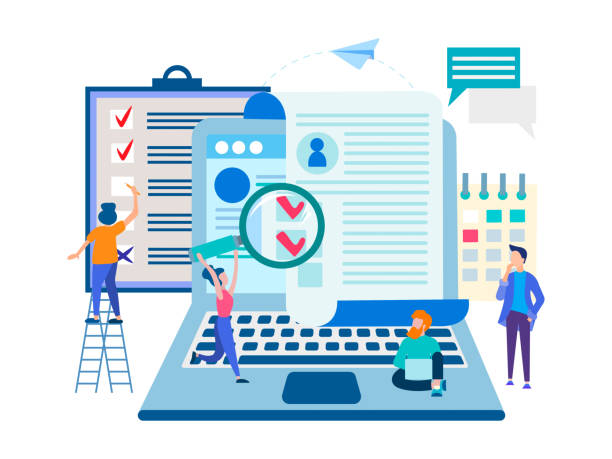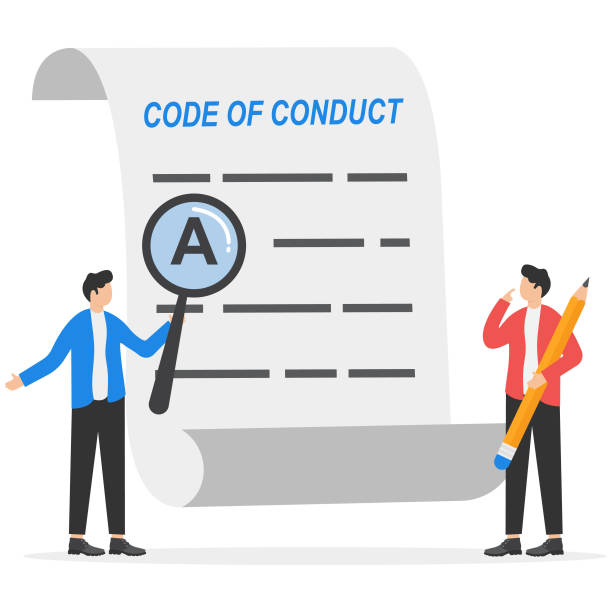The Importance of Multilingual Website Design in Today’s World
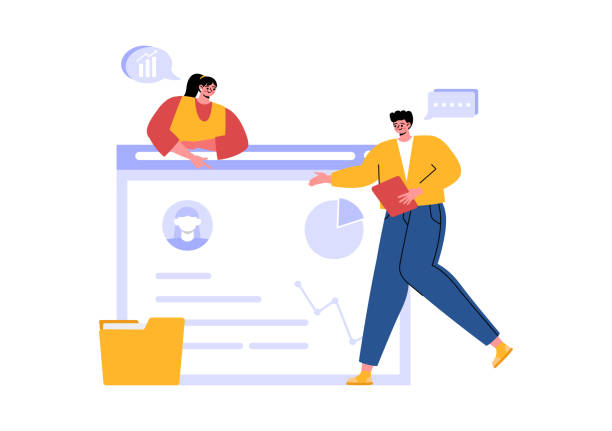
In the current era, where geographical boundaries have faded in the virtual world, the #importance of #multilingual website design becomes more evident than ever.
For businesses seeking to expand their target market beyond domestic borders, having a website in just one language is no longer sufficient; instead, there is a need for a comprehensive and inclusive approach to delivering content in various languages.
This is not merely an explanatory matter, but a strategic issue.
With multilingual website design, you will be able to connect with a wider audience from around the world, gain their trust, and ultimately increase your conversion rates.
This process allows you to introduce your products or services in a way that aligns with the local culture and language of each region.
Imagine a user in Japan searching for a specific product.
If your website is only in English, they will likely turn to competitors who offer their content in Japanese.
This simple example demonstrates how neglecting multilingualism can lead to the loss of countless opportunities.
Multilingual websites not only help increase accessibility but also play a significant role in improving user experience (UX).
When users can find the information they need in their native language, they feel more comfortable and confident, leading to deeper engagement with your brand.
This is a vital investment for international businesses that will yield high returns.
Many companies mistakenly believe that simple content translation is sufficient, but multilingual website design goes beyond mere translation and requires precise planning and correct execution.
Do you dream of a thriving online store but don’t know where to start?
RasaWeb is your comprehensive e-commerce website design solution.
✅ Attractive and user-friendly design
✅ Increase sales and revenue⚡ Get a free consultation
Key Challenges and Considerations in Multilingual Website Design

Although multilingual website design offers numerous benefits, this process is not without its challenges.
Understanding these challenges and planning to address them is crucial for success.
One of the most important considerations is the technical complexities related to URL structure, domain management, and SEO settings for each language.
For instance, deciding whether to use subdomains (e.g., en.example.com), subdirectories (e.g., example.com/en), or country code top-level domains (ccTLDs) (e.g., example.co.uk) can significantly impact SEO performance and ease of management.
This section requires a specialized and technical approach that can be questionable for many developers.
In addition to technical challenges, cultural considerations are also very important.
Content that is appealing in one specific language and culture might be completely meaningless or even offensive in another culture.
Localization, which goes beyond mere word-for-word translation and includes adapting content to customs, currency, dates, and even preferred colors of a specific region, is of high importance.
This aspect of multilingual website design requires deep research and understanding of the target audience.
Furthermore, managing and updating content in multiple languages can be time-consuming and costly; therefore, choosing a suitable Content Management System (CMS) with multilingual capabilities is highly crucial.
Failure to pay attention to these points can lead to reduced efficiency and even the failure of your international website design project.
Technical Implementation Methods for Multilingual Website Design
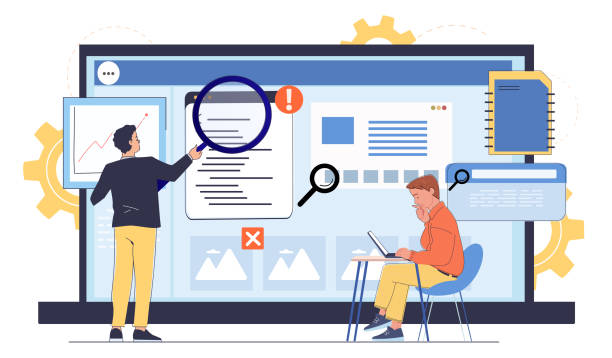
Implementing multilingual website design has various technical approaches, each with its own advantages and disadvantages.
Choosing the correct method depends on the project’s goals, budget, and available resources.
The three main approaches include using subdirectories (Subdirectories), subdomains (Subdomains), and country code top-level domains (ccTLDs).
The subdirectory method (e.g., example.com/en/ and example.com/fr/) is often recommended for SEO, as all content resides under a single domain, and Domain Authority is shared across languages.
Its management is also usually easier, as all files are under one hosting.
This approach is very instructive and implementable, especially for small and medium-sized businesses.
Using subdomains (e.g., en.example.com and fr.example.com) is also a popular option.
In this method, each language is hosted as a separate subdomain.
This structure might seem a bit more complex, but it allows you to have separate servers and even hosting in different geographical regions for each language, which can help with loading speed.
However, from an SEO perspective, Google might consider subdomains as separate sites, which may require more optimization effort.
But the country code top-level domains (ccTLDs) approach, like example.de for Germany or example.fr for France, provides the strongest geographical signal to Google and is highly suitable for large businesses with a strong presence in local markets.
This method requires purchasing and managing multiple domains, which incurs more cost and complexity.
Choosing the correct method among these is crucial for the success of multilingual website design and must be done with careful and specialized analysis.
| Feature | Subdirectories | Subdomains | Country Code Top-Level Domains (ccTLDs) |
|---|---|---|---|
| Example | example.com/en/ | en.example.com | example.co.uk |
| SEO | Centralized domain authority, strong geographical signal for search engines | May be treated as separate sites, requires more SEO effort | Strongest geographical signal, ideal for precise country targeting |
| Ease of Management | High (one hosting, one domain) | Medium (separate subdomain management) | Low (requires managing multiple domains and hosting) |
| Cost | Low | Medium | High (purchasing multiple domains) |
Efficient Multilingual Content Management
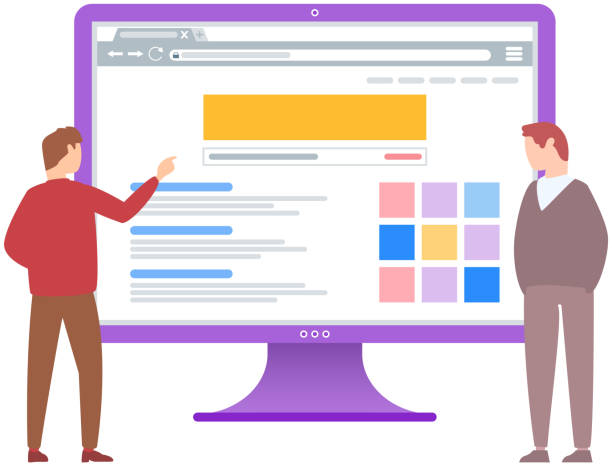
After choosing the technical structure, the next step is content management, which is a vital aspect of multilingual website design.
A powerful and flexible Content Management System (CMS) is the backbone of a successful multilingual website.
Your chosen CMS should have native capabilities for managing multiple languages, or provide this functionality through plugins and modules.
These capabilities include easy content translation, managing different language versions of a page, and the ability to link equivalent pages in different languages (such as using the hreflang tag, which will be explained later).
This section provides practical guidance for choosing the right tools.
Choosing a suitable CMS can prevent common errors in content management.
For example, WordPress with plugins like WPML or Polylang, Drupal and Joomla with built-in multilingual capabilities, and more specialized systems like Contentful or Sanity, known as Headless CMS, are options that can be used for multilingual website design.
In addition to CMS selection, having an organized workflow for content translation and updates is also very important.
This workflow should include content creation, submission for translation, review and editing, and finally, publishing.
This is essential to ensure the quality and consistency of content across all languages.
Efficient multilingual content management not only reduces time and cost but also helps you quickly respond to market needs and provide a better user experience.
This is a specialized process that requires high precision.
Does your current corporate website present a worthy image of your brand and attract new customers?
If not, turn this challenge into an opportunity with RasaWeb’s professional corporate website design services.
✅ Significantly improves your brand’s credibility and image.
✅ Paves the way for attracting new leads and customers for you.
⚡ For a free and specialized consultation, contact RasaWeb now!
SEO Optimization for Multilingual Websites

The success of a multilingual website design would be incomplete without special attention to Search Engine Optimization (SEO) for each language and region.
Multilingual SEO has its own complexities that go beyond traditional SEO.
One of the most important elements is the correct use of the hreflang tag.
This tag informs search engines like Google and Yandex which version of a page is intended for which specific language and region, preventing the display of duplicate content.
Incorrect use of hreflang can lead to serious SEO problems.
This section is an educational and essential guide for every SEO specialist.
Keyword research for each language is also a crucial step.
Keywords that are effective in one language might not be applicable or might have different meanings and nuances in another language.
This requires local keyword research by specialized and native-speaking individuals.
Furthermore, Local SEO should also be considered for each language version of the website.
This includes optimizing for local searches, registering the business in local directories, and obtaining links from local websites.
Website loading speed is also very important for users in different regions of the world.
Using Content Delivery Networks (CDNs) can help improve loading speed for users in distant areas.
Optimizing images and using multimedia content appropriate for each culture is also of high importance.
Success in multilingual website design and international websites largely depends on the precise implementation of multilingual SEO strategies.
User Experience and User Interface Design in Multilingual Websites

User Experience (UX) and User Interface (UI) design play a pivotal role in the success of multilingual website design.
The UI design should allow users to easily select their desired language.
This is typically done via a Language Switcher, which should be placed in a clear and accessible location.
Country flags alone are not recommended for displaying language, as one language may be spoken in several countries (e.g., English in the USA, UK, Canada) or a country may have multiple official languages (e.g., Switzerland).
It is better to use the full name of the language (such as “Persian“ or “English“).
This section is a comprehensive guide for designers.
In addition to the language switcher, cultural considerations in visual design are also vital.
Colors, symbols, images, and even text direction (right-to-left or left-to-right) must align with the target audience’s culture.
A design that is appealing in Western culture might be perceived differently in Asian or Middle Eastern cultures.
For example, the color red may symbolize love and power in some cultures, while in others it might symbolize danger.
This aspect of multilingual website design requires analytical research and a deep understanding of cultural differences.
Navigation and information hierarchy should also be designed to be logical and user-friendly in every language.
Ensuring that all UI elements, from buttons to error messages, are correctly translated and localized is essential for providing a seamless and satisfying user experience.
A successful international website is one where its users, anywhere in the world, feel that the website was designed for them.
The Importance of Translation and Localization Quality

The quality of translation and localization is the cornerstone of success in multilingual website design.
Simply translating words from one language to another is not enough; content must be localized, meaning it aligns with the cultural, social, and even legal differences of the target region.
This process includes adapting terminology, units of measurement, date and time formats, currency, address and phone number formats, and even tone and writing style.
Using mere machine translations, without human review and localization, can result in unnatural, inaccurate, and sometimes even offensive content that harms your brand’s credibility.
This is a specialized matter that requires great precision.
Hiring native-speaking and specialized translators in your business domain ensures high-quality translation and localization.
These individuals not only have complete mastery of the language but are also familiar with cultural nuances and specific industry terminology.
For example, the translation of a marketing term might have a different meaning in another culture and may require “creative rewriting“ or “Transcreation“ to convey the original message with the same impact.
This explains the important differences in translation.
Localization is not limited to text; images, videos, and other visual elements must also be reviewed to ensure they are culturally appropriate.
This is particularly important for entertaining websites or those with heavy visual content.
Poor translation quality and lack of localization can lead to poor user experience, decreased conversion rates, and loss of customers.
Therefore, investing in professional translation and localization is an essential step for any successful multilingual website design.
| Concept | Explanation | Purpose |
|---|---|---|
| Translation | Converting text from one language to another, preserving the original meaning and linguistic accuracy. | To transfer information and the main message into another language. |
| Localization | Adapting content and product to the cultural, social, and linguistic characteristics of a specific region. Includes adjusting currency, date, formats, and cultural references. |
To create a sense of familiarity and connection with local audiences and remove cultural barriers. |
| Transcreation | Going beyond translation and localization; recreating the core message while maintaining the intent, style and tone for an audience with a different culture and language. Often used in marketing and advertising. |
To convey the emotion and impact of the original message, not just the meaning of words. |
Continuous Maintenance and Updates of Multilingual Websites
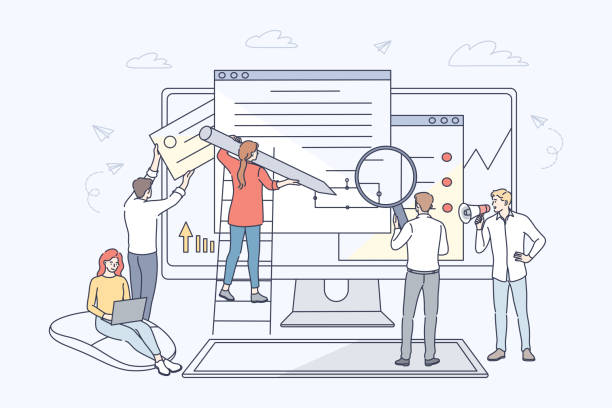
Multilingual website design is not a one-time project, but an ongoing process that requires continuous maintenance and updates.
Website content is constantly changing and evolving; new products are added, services are updated, and new news and articles are published.
All these changes must be reflected in each of your website’s language versions.
Failure to update content simultaneously across all languages can lead to inconsistency and user confusion.
This section includes important guidelines for maintaining quality.
Part of maintenance includes periodic checks for broken links and technical issues related to multilingualism.
For example, ensuring that the language switcher functions correctly and that equivalent pages in each language are properly linked.
Furthermore, monitoring SEO performance for each language and making necessary adjustments based on changes in search engine algorithms is also vital.
This analytical and continuous process helps your website consistently remain high in search rankings.
Additionally, take user feedback from different languages seriously.
Users may report issues arising from cultural or linguistic differences that require immediate attention.
Allocating sufficient budget and resources for continuous maintenance and updates ensures that your multilingual website design remains efficient and effective over time.
A dynamic international website requires ongoing care to compete in global markets and satisfy its audience.
Falling behind in the competition with large online stores?
RasaWeb, with professional e-commerce website design, brings your business online and increases your market share!
✅ Boost brand credibility and customer trust
✅ Easy shopping experience leads to more sales
⚡ Act now to get a free website design consultation!
Measuring Success and Analyzing Multilingual Website Performance

To ensure the return on investment in multilingual website design, measuring its success and analyzing its performance is of high importance.
Analytical tools like Google Analytics offer special capabilities for tracking the performance of multilingual websites.
You can segment incoming traffic by language, geographical location, and source.
This helps you understand which languages and regions have the most visitors and which pages are more popular in each language.
These data are highly informative and crucial for future decision-making.
Key metrics to consider include: Conversion Rate for each language, Time on Site, Bounce Rate, and User Journeys in each language version.
If the bounce rate for a specific language is high, it might indicate poor translation, insufficient localization, or technical issues in that version.
Analyzing this data allows you to identify the strengths and weaknesses of your multilingual website design and implement necessary improvements.
Additionally, you can use heatmap tools and session recording to gain a deeper understanding of user behavior in each language.
Comparing performance across different languages can provide valuable analytical insights and help you optimize your marketing and content strategies for each target market.
This is a specialized approach that will ultimately lead to increased returns for your global website.
Future Trends in Multilingual Website Design and Globalization

The world of multilingual website design and web globalization is constantly evolving.
Advances in Artificial Intelligence (AI) and Machine Learning (ML) will significantly impact how content is translated and localized.
Neural Machine Translation (NMT) tools are currently capable of producing much higher quality translations than in the past, and their accuracy and fluency are expected to increase dramatically in the future.
This can make the translation process faster and more cost-effective, but human review and localization will still be essential to preserve cultural nuances and appropriate tone.
This section contains news and predictive content.
Another important trend is Voice Search.
With the increasing use of voice assistants and smart speakers, optimizing content for voice search in different languages will become increasingly important.
This means using more natural language and longer keywords (Long-tail Keywords) that users articulate verbally.
The expansion of emerging markets and increased internet access in less developed regions also create new opportunities for multilingual website design.
Businesses must be prepared to enter these new markets and offer their content in less common languages as well.
Personalizing content based on the user’s geographical location and language, using data and artificial intelligence, is also a growing trend.
This allows websites to provide a highly personalized user experience, which helps increase engagement and conversion rates.
The future of multilingual website design is full of innovative opportunities that can revolutionize global communication.
Frequently Asked Questions
| Number | Question | Answer |
|---|---|---|
| 1 | What is multilingual website design? | Multilingual website design means building a website whose content is available to users in several different languages. This is usually done through a simple user interface for language switching. |
| 2 | Why should we design a multilingual website? | Multilingual website design helps you reach a larger audience worldwide, provide a better user experience for international users, and improve your global SEO. |
| 3 | What are the main methods for implementing multilingualism on a website? | The main methods include using subdomains, subdirectories, or URL parameters for each language, and also using completely separate domains for each language. |
| 4 | For SEO, is using a subdirectory better or a subdomain? | From an SEO perspective, both subdirectories and subdomains can be effective. However, many SEO specialists prefer subdirectories due to better transfer of the main domain’s authority. |
| 5 | What are the important tips for translating multilingual website content? | Translation should be done by native translators, content should be localized (in addition to translation) to align with the target audience’s culture, and pure machine translation should be avoided. |
| 6 | What is the role of the hreflang tag in multilingual website SEO? | The hreflang tag helps search engines like Google display the correct language and regional version of a page to the appropriate users, which also prevents duplicate content issues. |
| 7 | Can a website be made multilingual without coding? | Yes, in Content Management Systems (CMS) like WordPress, powerful plugins such as WPML or Polylang exist that enable multilingual website creation without the need for coding. |
| 8 | What are the challenges of multilingual website design? | Challenges include managing translation, localizing content, adhering to SEO principles for each language, providing technical support for different languages, and ensuring design consistency across different languages. |
| 9 | What is the difference between translation and localization? | Translation is merely converting words from one language to another, while localization involves adapting content to the culture, customs, currency, date and time, and even appropriate colors for the target audience. |
| 10 | What is the best user experience (UX) for language switching? | A clear and accessible language switcher (usually in the header or footer), using the language name instead of a flag (due to regional variations), and maintaining the user’s position after language change are important UX tips. |
And other services of RasaWeb Advertising Agency in the field of advertising
Smart Data Analysis: A dedicated service for growth in click-through rates based on marketing automation.
Smart Advertising Campaign: Transform customer acquisition by optimizing key pages.
Smart Website Development: A dedicated service for digital branding growth based on the use of real data.
Smart Advertising Campaign: A fast and efficient solution for analyzing customer behavior with a focus on smart data analysis.
Smart Website Development: A novel service for improving SEO ranking through attractive UI design.
And over hundreds of other services in the field of online advertising, advertising consultation, and organizational solutions
Online Advertising | Advertising Strategy | Advertorial
Resources
WebRamz: Multilingual Website Design
IranHost: Multilingual Site SEO
Rayvarz: Introduction to Multilingual WordPress Plugins
HamyarWeb: Multilingual Website Design Tips
? Ready to take your business to the peak in the digital world? Rasaweb Afarin Digital Marketing Agency, with its expert and creative team, is always by your side to pave your path to success with innovative strategies and comprehensive services. From SEO and optimization to professional e-commerce website design, we are here to turn your digital dreams into reality.
📍 Tehran, Mirdamad Street, next to Bank Markazi, Kazeroon South Alley, Ramin Alley, No. 6

